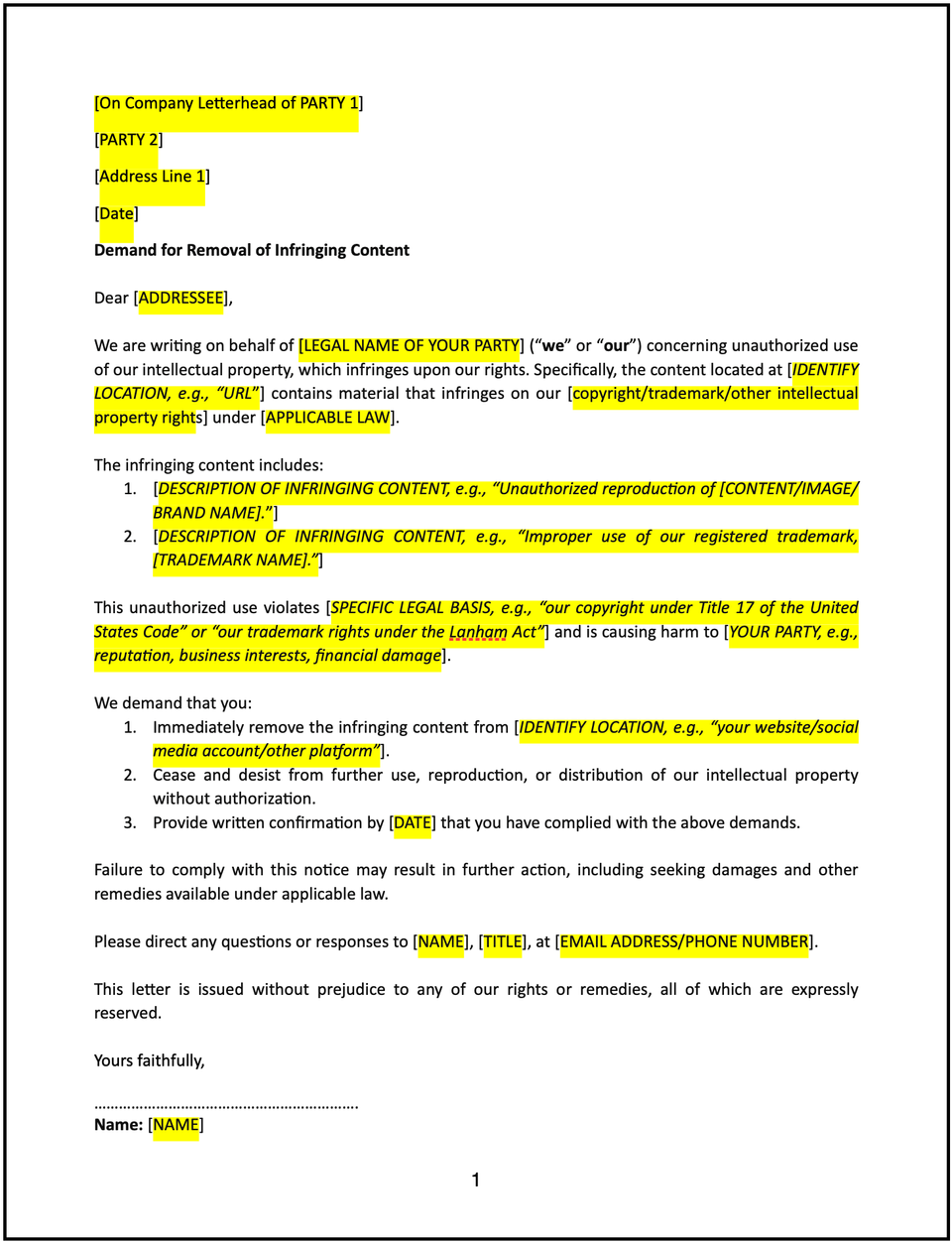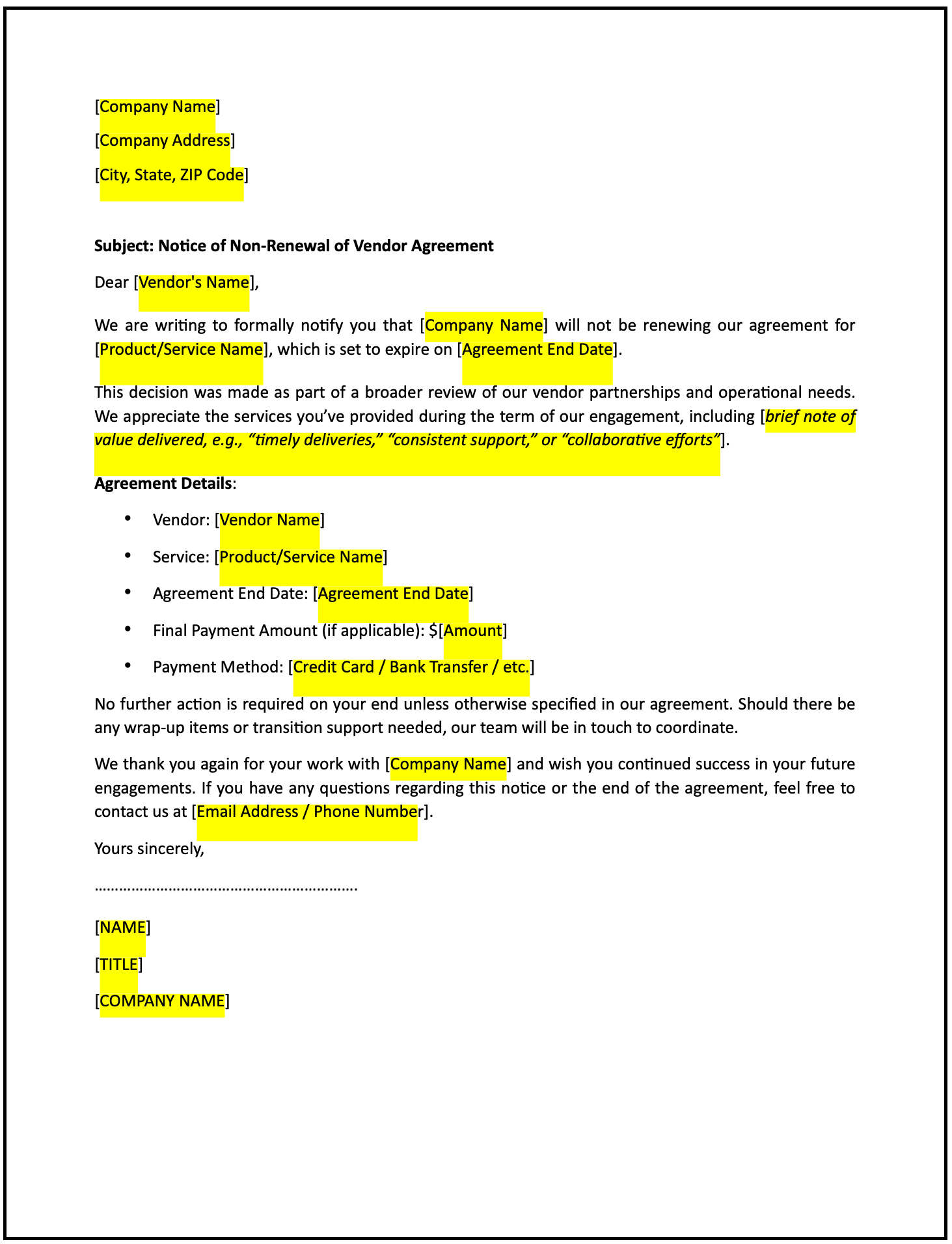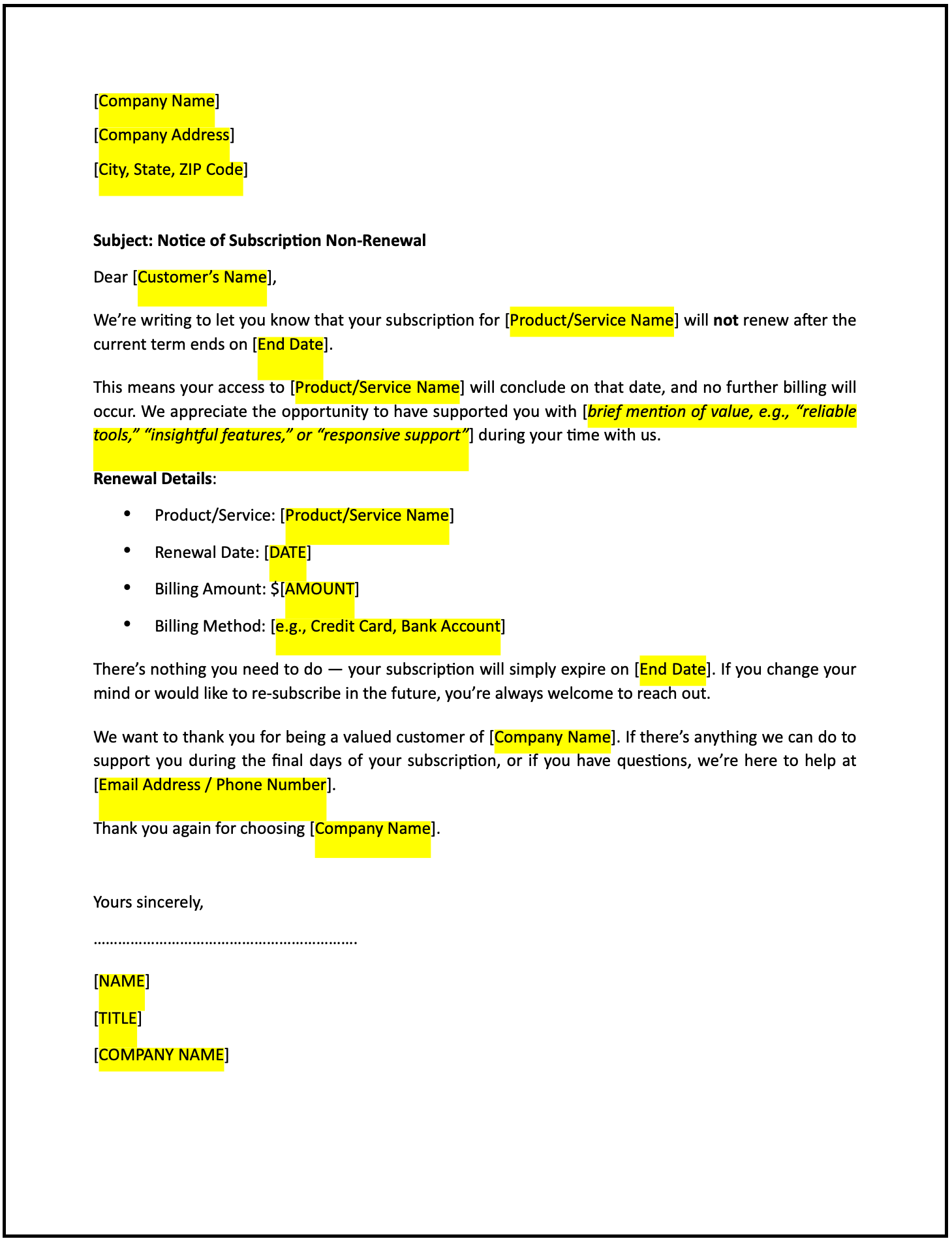Demand letter for removal of infringing content: Free template

Demand letter for removal of infringing content
A demand letter for the removal of infringing content is a formal way to address copyright or intellectual property violations while asserting your rights. This letter provides a professional approach to request the removal of the content and outlines the steps to resolve the matter amicably.
How to use this demand letter for removal of infringing content
- Open with context: Begin by introducing your organization, the intellectual property in question, and the nature of the infringement.
- Clearly identify the infringing content: Provide specific details about the content, such as URLs, publication titles, or locations where it appears.
- Assert your rights: Outline your ownership of the intellectual property and reference applicable laws or regulations, such as the DMCA or copyright statutes.
- Demand removal: Explicitly request the immediate removal of the infringing content and specify a reasonable deadline.
- Offer resolution: Indicate that compliance will resolve the issue but failure to act may result in further legal action.
- Maintain a professional tone: Ensure the letter is clear, respectful, and assertive.
- Provide contact information: Include your contact details for any questions or confirmation of compliance.
Benefits of using a demand letter for removal of infringing content
This letter template ensures a structured and professional way to address intellectual property violations while fostering resolution and compliance. Here’s how it helps:
- Protects your rights: Clearly asserting ownership demonstrates your commitment to defending intellectual property.
- Encourages compliance: Providing specific details and deadlines encourages prompt action to remove infringing content.
- Reflects professionalism: A well-crafted demand letter reinforces your credibility and seriousness.
- Reduces disputes: Clear communication minimizes misunderstandings and fosters resolution.
- Provides legal backing: Referencing applicable laws supports your position and establishes authority.
Tips for writing an effective demand letter for removal of infringing content
- Be specific: Clearly identify the infringing content and provide detailed references for its location.
- Use professional language: Maintain a respectful yet assertive tone to convey the seriousness of the matter.
- Reference laws: Cite applicable intellectual property laws or regulations to strengthen your claim.
- Set a deadline: Specify a reasonable timeframe for compliance to create urgency.
- Keep it concise: Focus on the key points without overwhelming the recipient with unnecessary details.
Frequently asked questions (FAQs)
Q: What details should I include in this letter?
A: Include details about the infringing content, your intellectual property rights, applicable laws, a demand for removal, and a deadline for compliance.
Q: Should I personalize the letter?
A: Yes, addressing the recipient directly and tailoring the content to the specific infringement enhances clarity and impact.
Q: Who typically receives this letter?
A: Send the letter to the individual or entity responsible for the infringing content, such as a website owner, publisher, or platform.
Q: How formal should this letter be?
A: The tone should be highly professional and assertive to ensure the seriousness of the matter is communicated.
Q: When should this letter be sent?
A: Send the letter promptly after identifying the infringement to demonstrate your commitment to protecting your rights.
Q: Can this letter include legal consequences?
A: Yes, mentioning potential legal action if compliance is not met reinforces the demand’s urgency and importance.
Q: Is acknowledgment from the recipient required?
A: While not required, requesting confirmation of compliance ensures the issue is resolved effectively.
This article contains general legal information and does not contain legal advice. Cobrief is not a law firm or a substitute for an attorney or law firm. The law is complex and changes often. For legal advice, please ask a lawyer.


